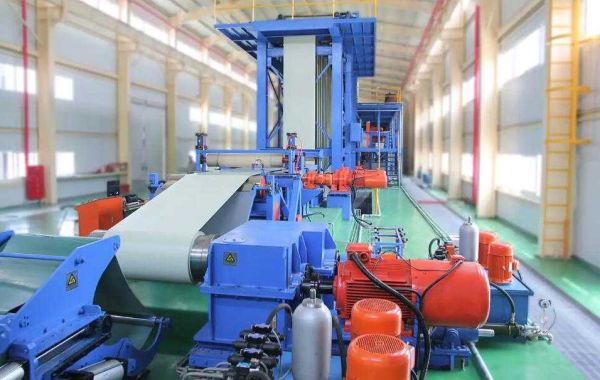Aluminum Coil Coating Lines play a crucial role in transforming aluminum into versatile materials that serve various industries. These lines are designed to apply protective and decorative coatings to aluminum coils, making them suitable for a wide range of applications. The process involves several key steps, including surface cleaning, coating, drying, and curing.
.jpg)
The first step in the aluminum coil coating process is surface preparation. Before any coatings are applied, the aluminum coils are thoroughly cleaned to remove any oils, dust, or debris. This ensures that the coating adheres properly to the metal surface. Typically, a chemical cleaning process or mechanical brushing is used to achieve the necessary level of cleanliness.
Once cleaned, the aluminum coil is moved through a series of coating stations. The coating can vary depending on the intended use of the product. For instance, a layer of primer is applied to improve adhesion and durability, followed by a decorative finish coat. This finish can be either a solid color or a pattern, and it enhances both the visual appeal and the weather resistance of the aluminum.
After coating, the aluminum coils are passed through an oven for drying and curing. This step is essential to harden the coating and make it resistant to wear and environmental factors. The curing process also ensures that the coating bonds tightly with the aluminum, creating a long-lasting and protective surface.
Aluminum coil coating lines are widely used in industries like construction, automotive, packaging, and electronics. In the construction industry, for example, they are employed to coat aluminum for use in roofing, siding, and window frames. The coating adds an extra layer of protection against corrosion, making these materials suitable for outdoor exposure.
In automotive manufacturing, coated aluminum coils are used for body panels and trim components. The coating provides both aesthetic value and protection against the elements, enhancing the vehicle’s overall performance and longevity. Additionally, coated aluminum is often used in the production of packaging materials, where its light weight and resistance to corrosion make it an ideal choice for cans and containers.
In conclusion, aluminum coil coating lines are indispensable in producing materials that serve a wide array of industries. Their ability to apply protective coatings to aluminum ensures that the final product is durable, aesthetically pleasing, and resistant to environmental factors.
Model | JET-HCH-1600 | JET-HCH-2000 |
Center Height(mm) | 1100 | 1100 |
Production Speed (m/min) | 1-5 | 1-5 |
Width(mm) | 800-1600 | 800-2000 |
Dimension(mm) | 40000×3800×3000 | 40000×4000×3000 |
Aluminum Coilthickness Range | 0.30-1.0mm, aluminum coil weight 3T | |
Product Thickness | Honeycomb plate 5-30mm | |
Design Machine Column Speed | 0-8m/min | |
Production Speed | 2-6m/min | |
Aluminum Roll Width Range | 800-1600mm | |
Equipment Power | The whole line is about 538 kw | |
Equipment Electronic Control Configuration | ABB inverter, Korea LG low-voltage electrical appliance | |








